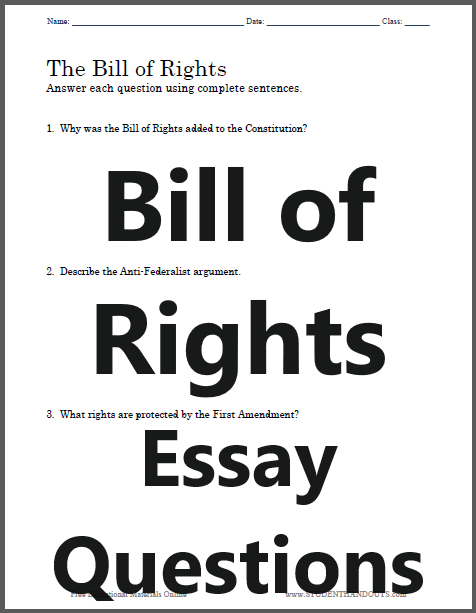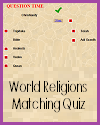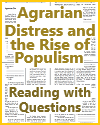| Bill of Rights Essay Questions |
|---|
| www.studenthandouts.com ↣ U.S. History ↣ Forming a National Government ↣ Worksheets |
 |
    |
|
1. Why was the Bill of Rights added to the Constitution? 2. Describe the Anti-Federalist argument. 3. What rights are protected by the First Amendment? Click here to print. Answers will vary. The First Amendment to the United States Constitution protects several fundamental rights and freedoms. Freedom of Religion: The First Amendment prohibits the government from establishing an official religion (the Establishment Clause) and from interfering with individuals' religious beliefs and practices (the Free Exercise Clause). This ensures religious freedom and the separation of church and state. Freedom of Speech: The First Amendment protects the right to express one's thoughts, opinions, and ideas freely, even if those expressions are unpopular or controversial. However, there are limitations, such as prohibitions on incitement to violence or true threats. Freedom of the Press: This freedom grants journalists and media outlets the right to publish information and opinions without government censorship or prior restraint. A free press is essential for a functioning democracy. Freedom of Assembly: The First Amendment guarantees the right to peacefully assemble and associate with others for various purposes, such as political gatherings, protests, or meetings. Permits may be required for large public assemblies to ensure public safety but cannot be used to stifle free expression. Freedom of Petition: Citizens have the right to petition the government for a redress of grievances. This means they can formally request changes in government policies or actions they believe are unjust. These rights collectively safeguard freedom of expression, religion, and association and are essential components of a democratic society. However, it's important to note that these rights are not absolute, and there are legal limitations and regulations to balance them with other societal interests, such as public safety and national security. Court rulings and legal precedents help define the boundaries and application of these First Amendment rights. |
| www.studenthandouts.com ↣ U.S. History ↣ Forming a National Government ↣ Worksheets |








